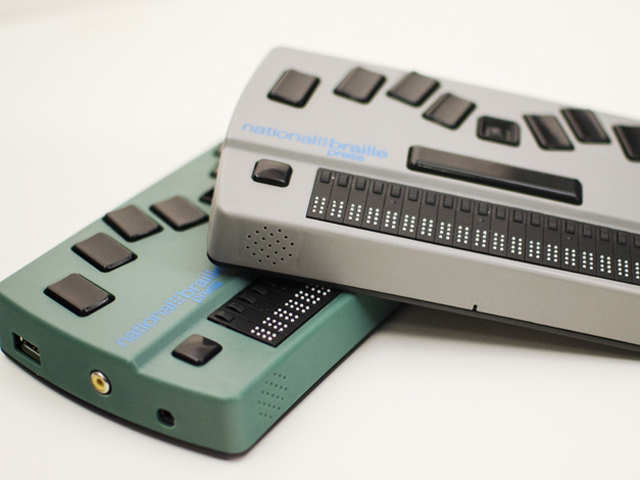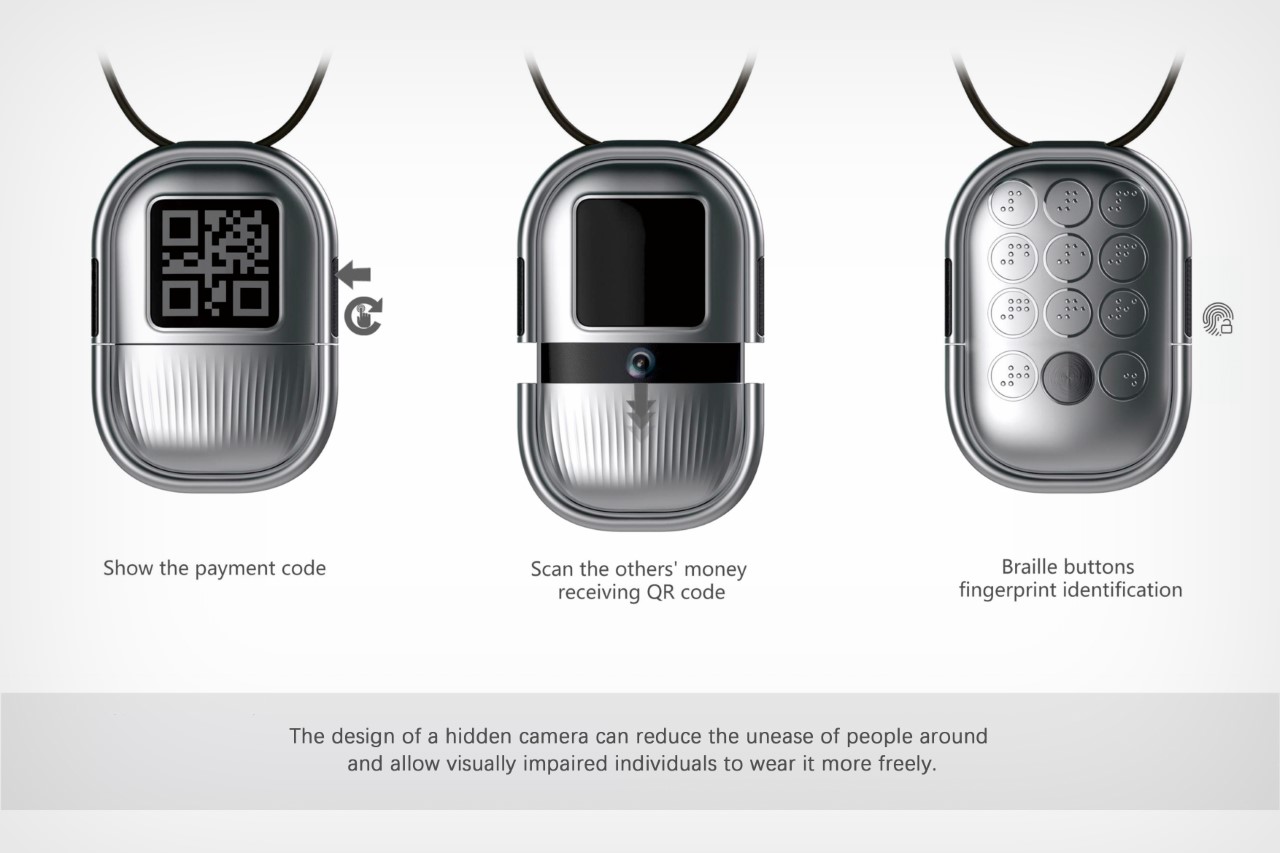Mobility Aids for Visually Impaired Users: Traveling the World with Confidence
Mobility Aids for Visually Impaired Users: Traveling the World with Confidence
Blog Article
Enhancing Lives With Advanced Assistive Gadgets for the Blind
The combination of sophisticated assistive devices for the blind is transforming just how people experience their surroundings and connect with their communities. What does this evolution imply for the future of assistive innovation and its role in equipping individuals?
Summary of Assistive Tools
Assistive devices for the blind encompass a varied array of tools and modern technologies made to boost independence and boost the lifestyle for individuals with visual disabilities. These devices deal with different requirements, from navigation and flexibility to interaction and everyday task administration.
Among the primary classifications of assistive gadgets includes mobility aids, such as white walking sticks and overview canines, which help customers browse their environments securely. Electronic travel aids, outfitted with sensing units and audio feedback, also play a significant duty in flexibility improvement.
Furthermore, tools that assist with day-to-day living tasks, such as adaptive cooking area devices, Braille labels, and talking watches, encourage people to do tasks individually. Interaction help, consisting of display readers and Braille displays, promote accessibility to info and allow people to involve properly with the digital globe.
Furthermore, low-tech remedies like multiplying glasses and large-print materials remain vital for many users. Jointly, these assistive tools serve not only as useful devices however also as vital enablers of freedom, promoting greater involvement in a world that often prioritizes sighted experiences. Their integration into day-to-day live is crucial for advertising inclusivity and boosting general wellness for those with aesthetic disabilities.
Innovative Technologies being used
Development in modern technology has actually considerably transformed the landscape of tools readily available for people with aesthetic impairments. Among one of the most remarkable improvements are smart glasses incorporated with augmented truth, which offer real-time navigating assistance and things recognition. These tools utilize advanced cams and fabricated intelligence to supply auditory cues, improving the user's spatial understanding and freedom.
Additionally, mobile applications have actually arised as powerful sources, allowing users to determine currency, reviewed message aloud, and browse unknown settings via spoken instructions. Tools such as Braille display screens and refreshable Braille tools remain to advance, providing smooth connection with smart devices and computers, thus boosting communication and accessibility to information.
Wearable technology, including smartwatches furnished with voice-activated features, even more equips individuals by facilitating quick access to notifications and informs without needing visual interaction. Tactile maps and 3D printing are also getting traction, offering tangible representations of areas that help in orientation and wheelchair training.
Collectively, these ingenious technologies not only improve the lives of aesthetically impaired individuals however additionally foster better freedom, inclusivity, and involvement with the wider community, thus improving understandings of availability. (Voice-activated assistive devices)
Individual Stories of Empowerment
Empowerment typically arises from individual experiences that highlight the transformative impact of modern technology on people with visual impairments. Take, for example, the story of Sarah, a young musician who reclaimed her interest for paint via using a clever walking stick equipped with obstacle discovery. This gadget not just promoted her movement but instilled a newfound confidence, enabling her to navigate public rooms independently and pursue her imaginative endeavors.

These stories highlight the extensive impacts that advanced assistive tools can carry life. By allowing individuals to get rid of barriers, technology promotes a feeling retinologist near me of freedom and self-regard. Such empowerment stories act as a testament to the possibility of advancement, showing how the right devices can dramatically boost lifestyle and open doors to new opportunities for those with visual impairments.
Advantages of Advanced Solutions
The integration of sophisticated modern technology right into assistive devices significantly changes day-to-day experiences for those affected by vision loss. Smart glasses for the visually impaired. Instruments such as smart walking sticks geared up with sensors, navigation apps, and wearable innovation are developed to provide real-time weblink responses, improving spatial awareness and decreasing the dangers associated with wheelchair.
In addition, progressed assistive technologies promote social inclusion by helping with communication and interaction. Voice-activated tools and apps permit people to gain access to details and engage with their environments individually, breaking obstacles that previously hindered their participation in academic, professional, and social setups.
On top of that, the customization and versatility of these services deal with the diverse requirements of users, thus boosting their overall lifestyle. Enhanced capability, such as object acknowledgment and text-to-speech abilities, encourages individuals with visual problems to carry out jobs that they might have once located challenging. Inevitably, advanced assistive innovations not only enhance self-reliance and safety and security yet additionally promote self-respect and self-regard, allowing users to lead fulfilling lives.
Future Trends in Assistive Tech
As modern technology continues to progress, the landscape of assistive devices for the blind is poised for impressive innovations that will further improve ease of access and independence. Arising trends in assistive technology show a shift towards raised combination of fabricated knowledge (AI) and machine knowing, making it possible for tools to adjust to specific customer requires in real-time. These technologies are anticipated to promote even more intuitive navigating systems that can recognize obstacles and give audio responses, dramatically boosting exterior mobility.
In addition, the growth of wearable tech, such as clever glasses geared up with enhanced reality, will certainly enable customers to get contextual information concerning their surroundings, thereby enriching their spatial recognition. Developments in haptic technology assurance to create responsive comments devices, enabling customers to view information with touch, enhancing understanding and communication with their atmosphere.
Telecommunication advancements go now are also leading the way for remote support solutions, where skilled specialists can supply guidance by means of video clip calls, making sure support is readily easily accessible. As these patterns unfold, the future of assistive devices for the blind will definitely promote greater autonomy, equipping individuals to navigate their globe with confidence and convenience.

Verdict
The integration of advanced assistive devices for the blind stands for a substantial advancement in promoting independence and boosting top quality of life. By utilizing cutting-edge technologies, these gadgets empower individuals to navigate their environments with greater confidence and freedom. As the area proceeds to develop, continuous study and advancement will likely generate much more advanced remedies, even more transforming the lived experiences of people with visual problems and promoting a higher feeling of addition within culture.
The assimilation of advanced assistive gadgets for the blind is changing how people experience their environments and communicate with their areas. The assimilation of advanced modern technology into assistive gadgets dramatically changes day-to-day experiences for those impacted by vision loss.As modern technology proceeds to advance, the landscape of assistive gadgets for the blind is positioned for remarkable innovations that will certainly even more boost ease of access and independence. Arising fads in assistive technology suggest a shift towards raised integration of man-made intelligence (AI) and device discovering, enabling gadgets to adjust to individual customer needs in real-time.The combination of advanced assistive tools for the blind stands for a considerable advancement in cultivating freedom and boosting quality of life.
Report this page